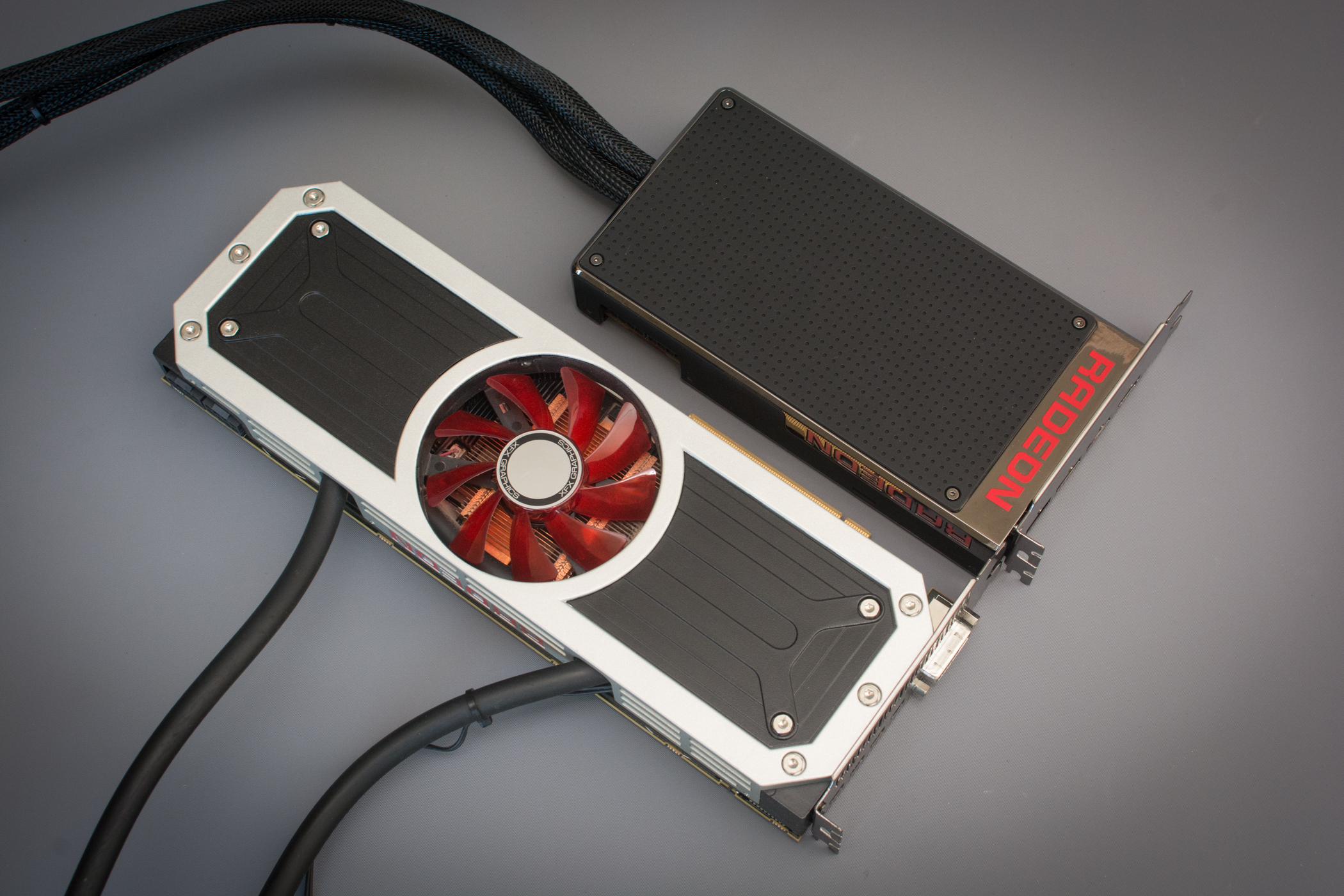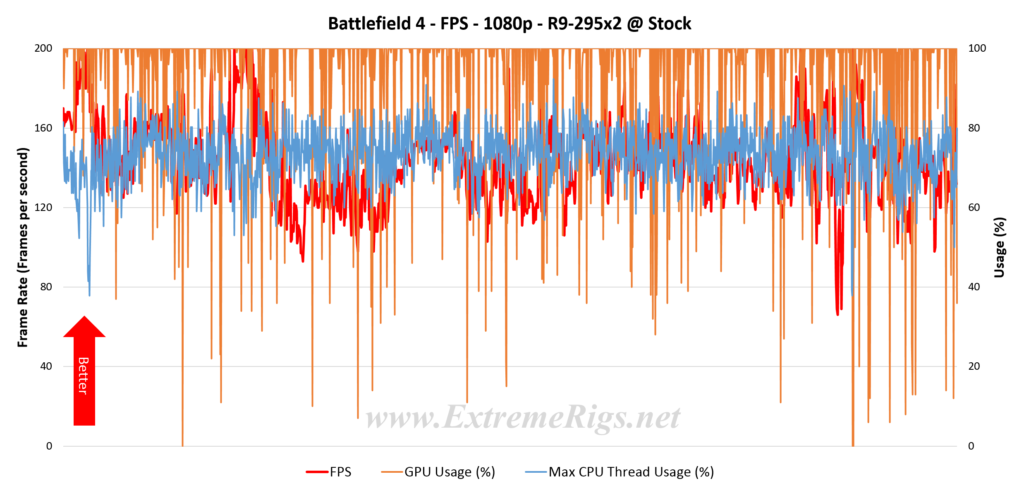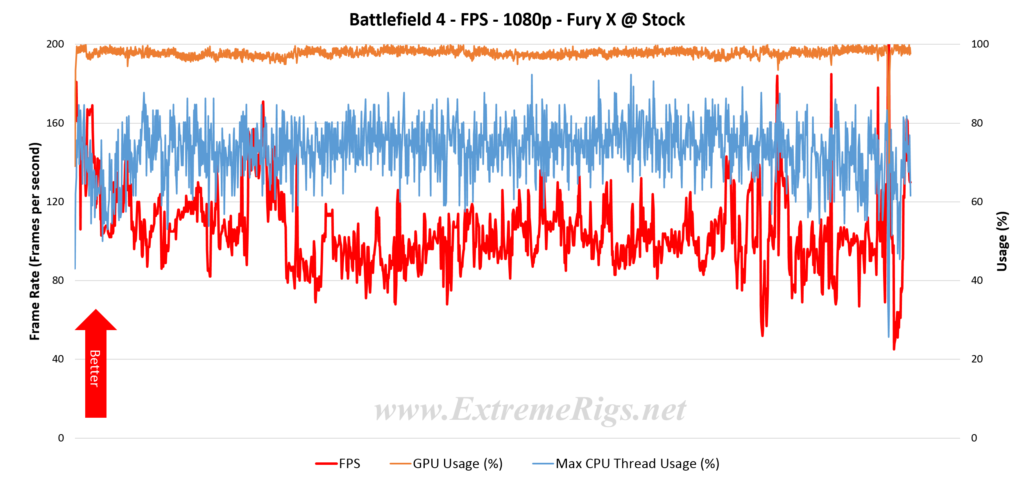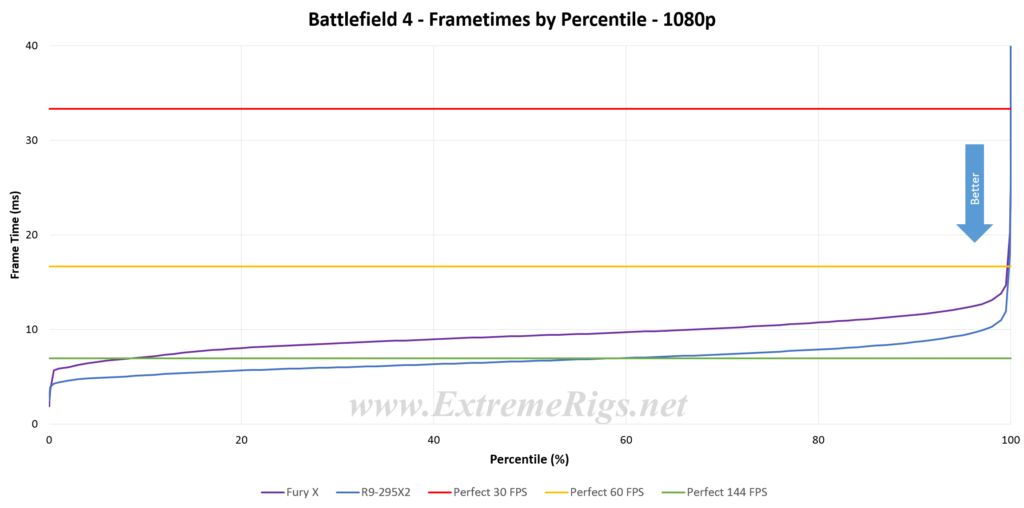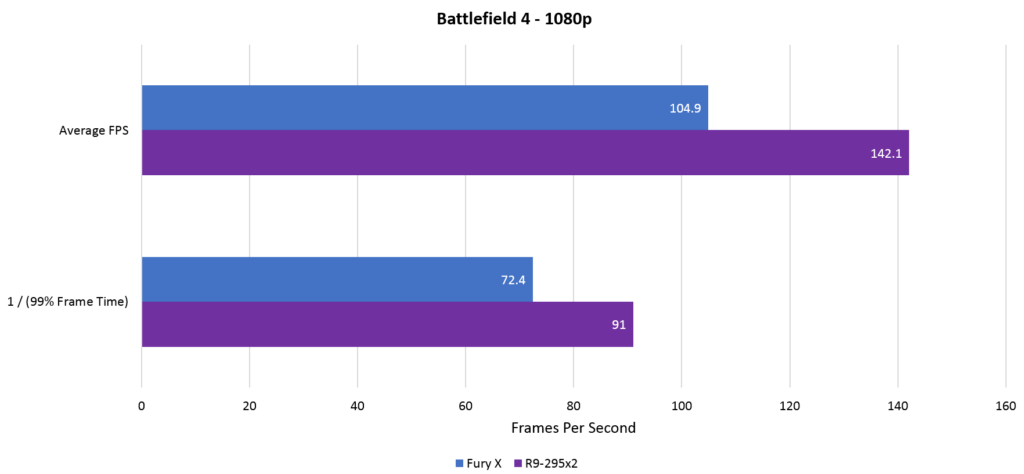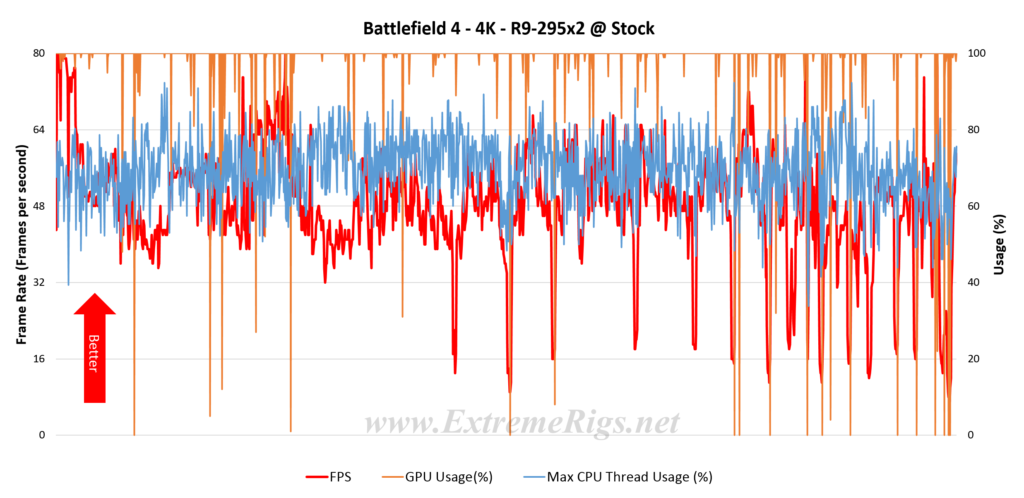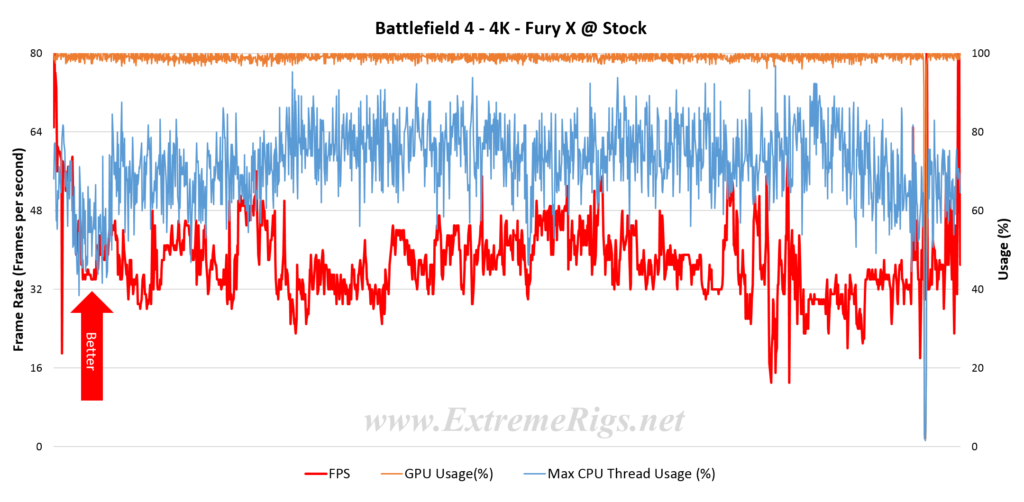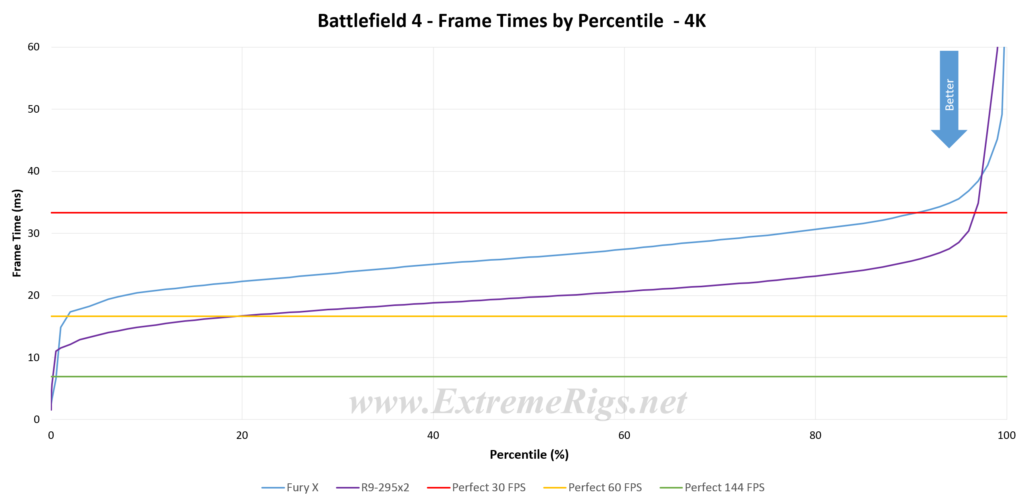Battlefield 4
Battlefield 4 is a 2013 first-person shooter video game developed by Swedish video game developer EA Digital Illusions CE (DICE) and published by Electronic Arts. It is a sequel to 2011’s Battlefield 3 and was released on October 29, 2013 in North America. We ran the game at “Ultra” settings with each respected resolution, MSAA off, and in single player mode.
- Graphics Quality – Ultra
- Texture Quality – Ultra
- Texture Filtering – Ultra
- Lighting Quality – Ultra
- Effects Quality – Ultra
- Post Process Quality – Ultra
- Mesh Quality – Ultra
- Terrain Quality – Ultra
- Terrain Decoration – Ultra
- AA Deferred – 4x MSAA
- AA Post – High
- Ambient Occlusion – HBAO
- V-Sync – Off
Kicking off with 1080p:
Here we can see clearly that GPU usage is far more consistent with the Fury X. The drop outs on the R9-295×2 maybe because of AMD’s frame pacing technology – idling a GPU in order to keep frames at more consistent intervals. CPU usage is also similar which is good to see despite the average frame rate going up.
Now let’s look at frame time percentiles:
Universally here the Fury X just always seems to have slower frametimes. Battlefield 4 is one of those games though that AMD does well with and worked comprehensively to tweak the drivers for.
Let’s see if things stay the same at 4K.
Again the Fury X is “smoother” but how does that translate into frametimes:
Here we have the interesting phenomenon where the 295×2 beats the Fury X *except* for that area of minimum frame rates. I.E. at 4K in BF4 frame pacing seems to be struggling to work it’s magic and the actual experience might be smoother with the Fury X despite it’s lower average FPS:
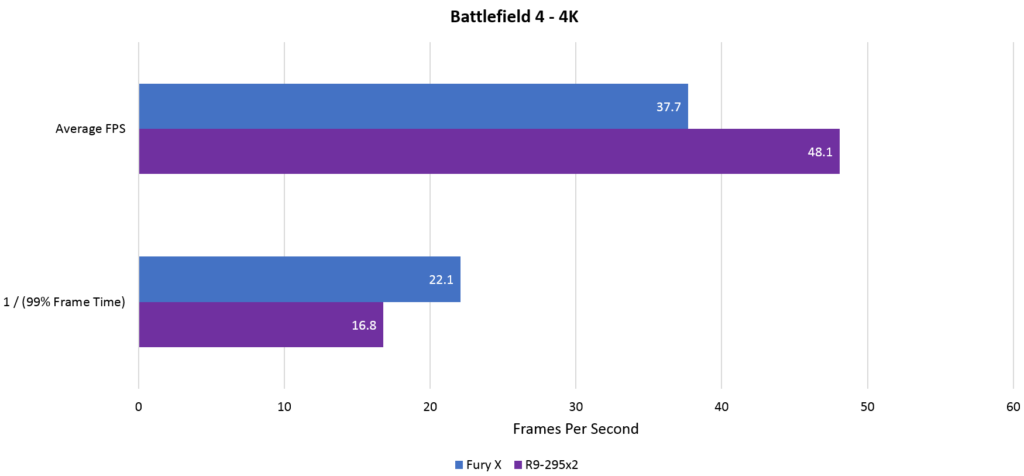 But is this an issue with frame pacing or does the Fury do so well because of HBM?
But is this an issue with frame pacing or does the Fury do so well because of HBM?
Let’s try another game.







